Walking through the winter garden today, I wandered among patches of brown, spent perennials and annuals long gone to seed. I let the seeds linger for the sake of wintering birds in need of food and to hopefully let them spread their habit a little.
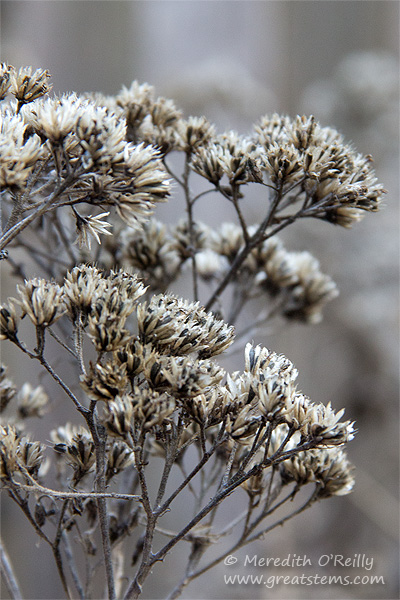
Frostweed (Verbesina virginica L.)
I’ve always been fascinated by seeds — shape, size, patterns, and especially dispersal methods. Plant species over all their thousands to millions of years of existence have evolved remarkable ways to disperse their seeds. After all, it’s to their advantage to send forth their seeds, not just to ensure population survival but to also not have tons of little baby plants growing up at their feet, so to speak — stealing sunlight, water, nutrients, and space from their parents.
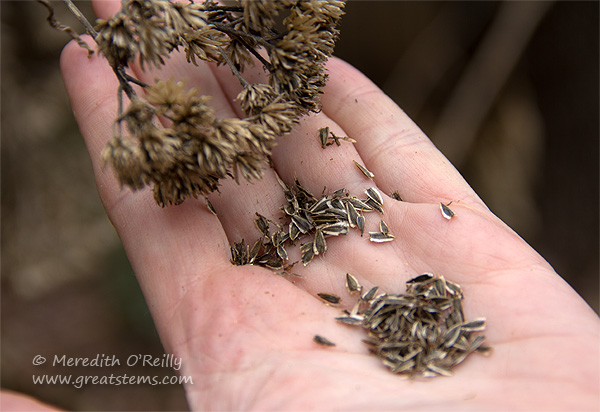
Frostweed (Verbesina virginica L.) produces copious seeds to feed overwintering birds.
Different plant species have different means of getting their seeds out into the world, of course, but generally speaking they fall into several main dispersal categories:
- Wind (Seeds float or flutter with help of the wind)
- Expulsion (Seeds are forcibly expelled)
- Gravity (Seeds bounce and roll)
- Animals (Seeds stick to, are eaten and digested by, are eaten as fruits with seeds discarded, or are stored and planted by animals. Note that humans take seed dispersal to a whole other level — sometimes with disastrous effects, such as spread of invasive plants.)
- Water (Seeds float to a new location)
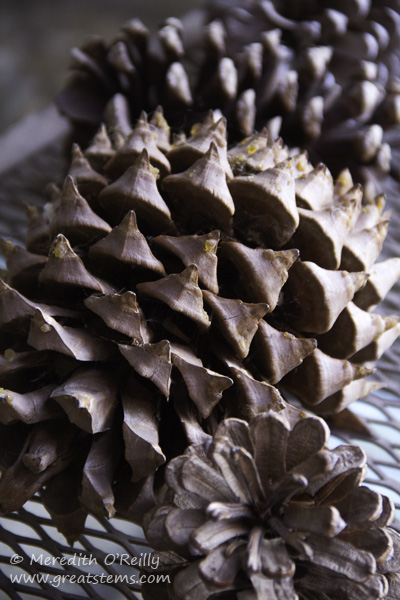
Assorted cones
Furthermore, some plants only release their seeds in response to certain triggers, such as heat from the sun, water, or drying. As another example, certain pine trees might drop their cones all over a woodland floor, but the cones will only release the actual seeds in response to a fire hot enough to burn living trees in the area. Such a trigger-dependent adaptation is called serotiny.
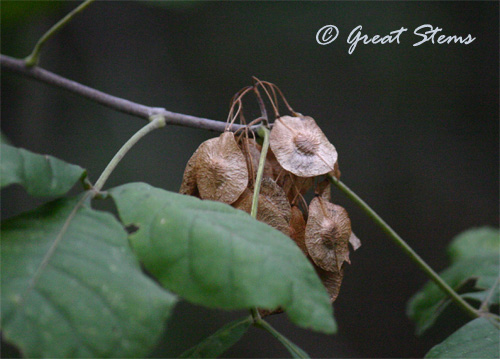
Wafer Ash (Ptelea trifoliata) seeds have circular “wings” to help them flutter to the ground.
Some seeds have parachute-like adaptations, such as the classic dandelion, that let them travel long distances on the wind, while other seeds have “wings” that help them flutter down or reach several feet away. Other seed heads spill out their seeds when a strong wind tilts the stem, such as the seed cup of a poppy.
My favorite example of expulsion, or forced dispersal, is that of the bluebonnet, whose pods twist and pop open in the warm sun, sending out their pebble-like seeds out a few feet away. Unfortunately, I don’t have any pictures of this action… yet!
For water dispersal, think of seeds that float, such as those of water lilies, lotus, and the all-time classic… coconuts.
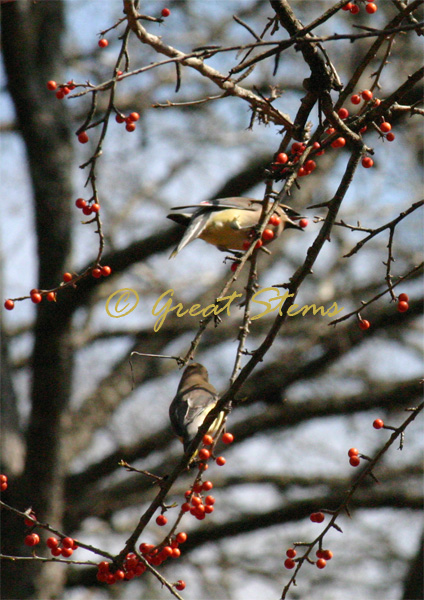
Cedar waxwings feasting on Yaupon (Ilex vomitoria) berries
In terms of animal dispersal, I can attest, having three dogs, that seeds that have hooks, spines, or barbs (such as burrs and stick tights) are very effective in getting their potential offspring spread far away from the parents. Birds can carry seeds great distances simply by eating fruits and seeds off one plant and then pooping out the seeds many feet or many miles away. And then there are squirrels and blue jays, notorious for planting acorns and other tree seeds, some of which will surely grow.
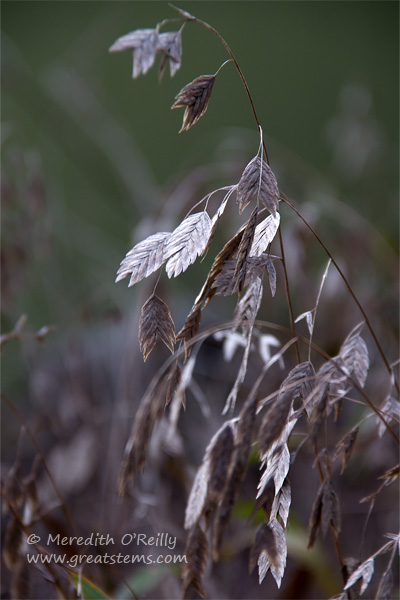
The seeds of Inland Sea Oats (Chasmanthium latifolium) present themselves in a graceful arch, until birds and wind start to disperse the seeds.
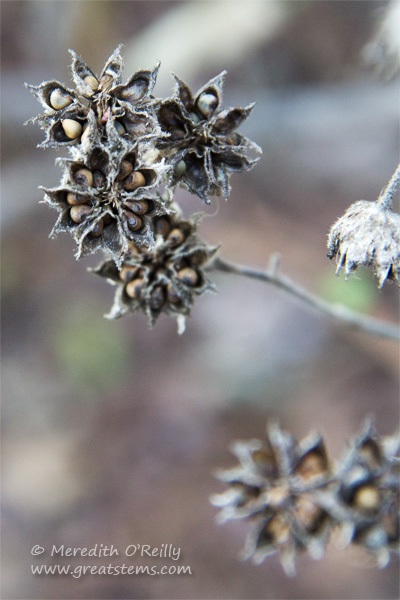
As the seedheads of Velvet-leaf Mallow (Allowissadula holosericea) mature, they open to reveal a cool radial pattern.
Gravity comes into play with many species — obviously it’s going to influence where seeds land, regardless of overall dispersal method. Never underestimate the success potential of a seed that has simply dropped and rolled to a perfect soil and light location.
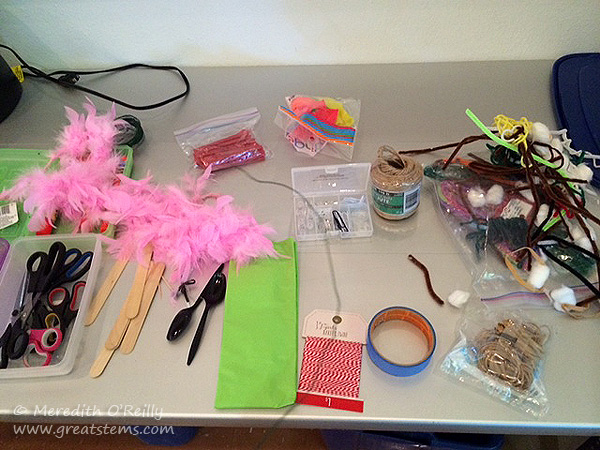 Working with kids has made the study of seed dispersal all the more fun. Want to challenge your children or students? Have them use different craft materials to design their own seeds with different methods of dispersal. Then test their dispersal success — possibly with a fan, a tub of water, a measuring tape to determine expulsion distance, or cloth or stuffed animal as “fur.” Try it yourself, too!
Working with kids has made the study of seed dispersal all the more fun. Want to challenge your children or students? Have them use different craft materials to design their own seeds with different methods of dispersal. Then test their dispersal success — possibly with a fan, a tub of water, a measuring tape to determine expulsion distance, or cloth or stuffed animal as “fur.” Try it yourself, too!